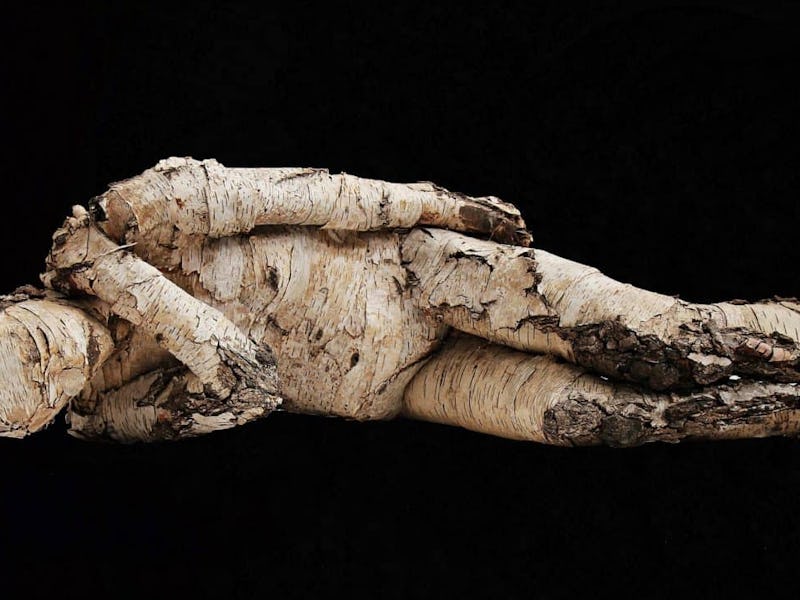Ancient mummy hearts may be the secret to understanding a 21st-century killer
Heart disease is not "a disease limited to our time."

Heart disease is a present-day killer, accounting for one in four deaths in the United States. However, recent research suggests that modern factors can’t fully explain its prevalence. After all, people who lived thousands of years ago perished with sick hearts too.
Scientists know this because they’ve looked into the hearts of mummies. In the October edition of the American Heart Journal a team led by Mohammad Madjid, M.D., presents a proof-of-concept study that demonstrates ancient people had clogged arteries to an extent that was previously unrecognized. The study began as an effort to evaluate whether or not heart disease is purely a modern-day problem. Now, Madjid tells Inverse, it’s clear heart disease is not “a disease limited to our time.”
“It results from a combined effect of nature and nurture,” Madjid, an assistant professor at the University of Texas’ McGovern Medical School, explains. “Our ancestors might not have lived long enough to die of heart attack, but they definitely had the substrate of it in their arteries.”
Madjid and colleagues evaluated mummies, three men and two women, with an imaging technique called near-infrared spectroscopy. The cause of death of three of the mummies is believed to be pneumonia, while one died of kidney disease and the other’s cause of death is unknown. The mummies came from parts of present-day Peru, Chile, and Egypt, and three were precisely dated to 2,000 B.C.
Atherosclerosis is a disease in which plaque builds up inside your arteries.
Madjid notes that these samples were “very hard to find.” They were provided by the late Arthur Aufderheide, M.D., a world-famous paleopathologist. Now, Madjid is trying to identify more samples in several museums across the world in an effort to expand his research.
The team writes that, crucially, “our samples were obtained from ordinary men and women, not from kings or pharaohs.” They were probably active hunter-gatherers, and the South American subjects likely had a diet rich in fish and vegetables because of their proximity to the sea. In a previous study, scientists examined the hearts of wealthy ancient Egyptians and found evidence of the heart disease atherosclerosis. These individuals likely ate lots of fatty meals and used plenty of salt.
However, the individuals examined here, who probably ate less fatty food, still showed signs of atherosclerosis.
While previous examinations of mummy hearts were performed with an imaging technique called computed tomography, this study is the first to utilize near-infrared spectroscopy. The downside of computed tomography is that it can’t detect the buildup of cholesterol in arteries. Near-infrared spectroscopy, however, can because it differentiates between various tissue components.
Tissue sample from a 55- to 60-year-old male who lived around 2,000 B.C.
In turn, each of the hearts showed a buildup of cholesterol plaque, a hallmark sign of atherosclerosis. This is a cardiovascular disease that involves plaque buildup in arteries; plaque is typically made up of factors like fat, calcium, and cholesterol. It’s a problem because over time plaque hardens and narrows arteries, limiting how much oxygen-rich blood can flow to your organs. Overtime, atherosclerosis can lead to heart attack, stroke, or death.
The team notes that while this study is limited in size, “the effect of genetic factors in the development of atherosclerosis in these populations cannot be ignored,” and that it’s clear “an interplay of nature versus nature has been in effect for thousands of years.”
It’s possible that these individuals developed atherosclerosis because of regular exposure to cooking fires or bacterial and parasitic infections. More research is needed to say. But Madjid says this makes clear that, as humans, we are all susceptible to heart disease, and “we need to ramp up a healthy lifestyle and risk factor control to prevent heart attacks.”
Abstract:
Computed tomography has been used previously in mummies to detect arterial calcification, which is a marker of later-stage atherosclerosis. Here, using the novel approach of near-infrared spectroscopy, we detected cholesterol-rich atherosclerotic plaques in arterial samples from ancient mummies. In this proof-of-concept study, we are the first to non-invasively detect these earlier-stage lesions in mummies from different geographical areas, suggesting that atherosclerosis has been present in humans since ancient times.